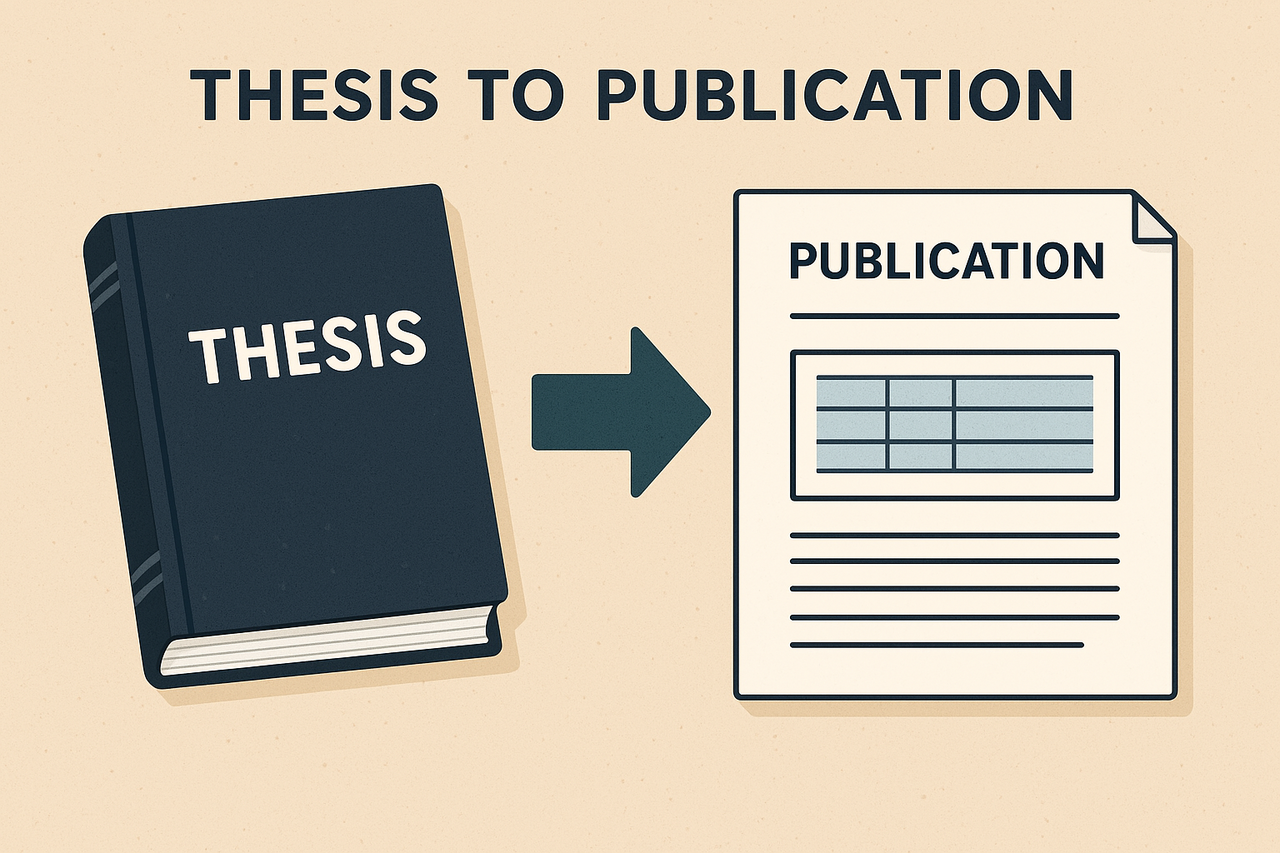Thesis to Publication
Published in Education

Completing a thesis or dissertation is a major academic achievement, but its true value lies in how the knowledge is disseminated. Transforming your thesis into a journal publication not only enhances your academic visibility but also contributes to the global research community. However, journal editors and reviewers expect much more concise, focused, and original content than a thesis offers. Therefore, a thoughtful and strategic approach is essential for successful conversion.
The first and most important step is identifying the core message or novel finding of your thesis. A thesis typically contains multiple objectives and an extensive review of literature, but a journal article must be centered around a single, well-defined research question or hypothesis. For example, if your thesis investigates multiple biomarkers in head and neck cancer, you may want to select the most clinically significant one (e.g., salivary miR-21 expression) for your first publication. Ask yourself: what is the most impactful or novel contribution my research makes? That becomes the foundation for your manuscript.
Once the topic is selected, begin the process of structural transformation. Academic journals follow the IMRaD format Introduction, Methods, Results, and Discussion which differs significantly from the thesis format. Your introduction should briefly introduce the background and lead directly to the research gap. Unlike a thesis, which may include 20–30 pages of background, a manuscript should present the most relevant references (usually up to 30) and clearly state the objective in 1–2 paragraphs. Your methods should be described concisely but with enough detail for reproducibility. If your study followed STROBE, CONSORT, or PRISMA guidelines, make sure to state that explicitly.
Your results section should be data-driven and visual. Use tables and figures that present data clearly and avoid redundancy between visuals and text. Any statistical analysis must be accurate, validated, and reported with appropriate metrics (e.g., confidence intervals, p-values, odds ratios). Consider using updated data visualization tools or statistical software (SPSS, R, GraphPad) to refine presentation. In the discussion, interpret your findings in light of existing literature but avoid simply restating results. Highlight novel insights, limitations, and future research directions.
Another key aspect is managing content length and clarity. While a thesis may exceed 100 pages, journal articles are usually 3,000–6,000 words. Be prepared to trim non-essential content. Remove redundant theoretical discussions, excessive citations, and overly descriptive passages. Use active voice, scientific tone, and precise language. Tools like Grammarly, Hemingway Editor, and ChatGPT (in editing mode) can assist in polishing the draft.
Choosing the right journal is crucial to increase the chances of acceptance. Begin by shortlisting journals that publish similar studies, ideally those indexed in reputable databases like PubMed, Scopus, or Web of Science. Consider whether you want to publish in an open-access journal (e.g., PLOS ONE, Frontiers, Cureus) or a subscription-based one. Assess factors like impact factor, article processing charges (APCs), peer review time, and journal policies on ethics, preprints, and data sharing. Always read and follow the journal’s “Instructions for Authors” carefully to align formatting, referencing style (e.g., Vancouver, APA), and ethical disclosures.
Next, ensure that your manuscript complies with ethical and authorship standards. If your thesis involved human or animal subjects, mention that you obtained ethical clearance from a recognized IRB or Ethics Committee. Clearly state any conflicts of interest, funding sources, and author contributions using CRediT taxonomy. Adhere to the authorship criteria set by ICMJE and avoid ghost or honorary authorship.
Once the manuscript is ready, write a professional cover letter addressed to the journal editor. Briefly introduce your research, highlight its novelty, and explain why it fits the journal’s scope. Suggest potential reviewers if the journal allows. Upon submission, be prepared for peer review, which may take several weeks to months. Reviewers might request revisions, additional data, or clarifications. Respond to each comment professionally, providing detailed point-by-point replies and highlighting revised sections in the manuscript. This step is often as crucial as the initial writing.
It's worth noting that one thesis may yield multiple publications if divided appropriately. For instance, the methodology or survey component could be published separately in a journal focusing on education or diagnostics, while molecular findings could go to a specialized pathology or oncology journal. However, avoid “salami slicing,” which refers to unjustifiably splitting data into multiple papers with minimal differences this is considered unethical.
Finally, after acceptance, promote your publication. Share the link on academic platforms like ResearchGate, LinkedIn, Google Scholar, ORCID, and institutional repositories. You can also create visual abstracts, infographics, or blog summaries to reach a broader audience. Enhancing the visibility of your work not only benefits your career (citations, collaborations, grant prospects) but also ensures that your research has real-world impact.





Please sign in or register for FREE
If you are a registered user on Research Communities by Springer Nature, please sign in
Excellent initiative. Turning a thesis into a scientific publication is one of the most challenging yet rewarding steps for any early-career researcher. Your clear and structured approach is incredibly helpful for those seeking academic visibility and rigor.
Thank you for sharing such a valuable guide.
Thank you for your thoughtful feedback and kind words.
This is interesting. Your submission is of great help. Thank you Dr
Thankyou so much for the appreciation!
Thanks. This is an interesting writeup.